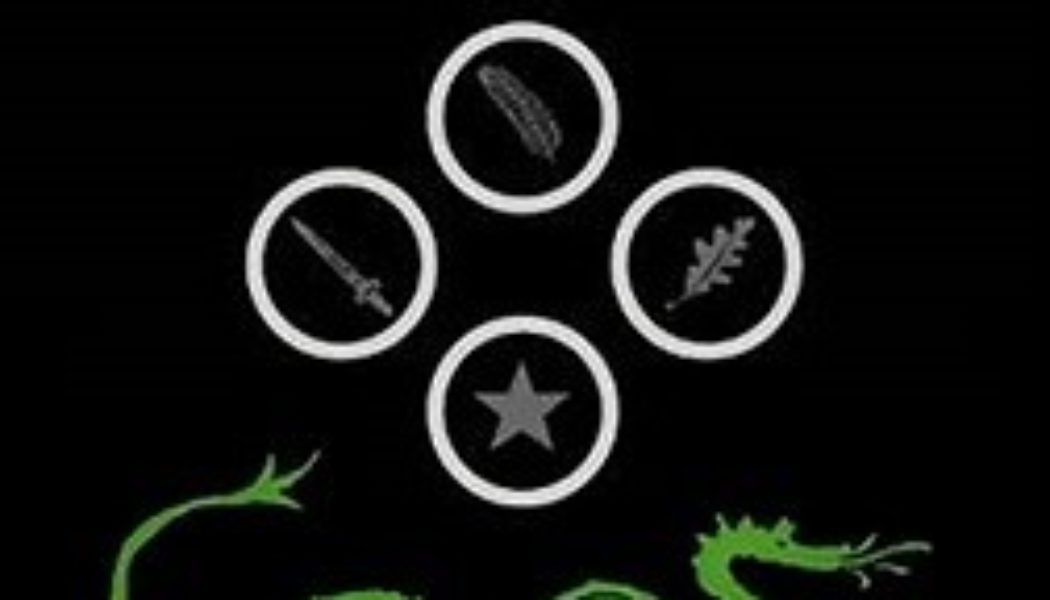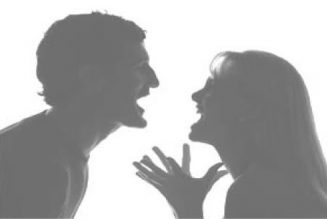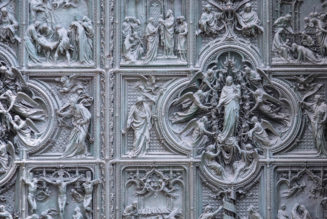 “I do not believe that I have ever written a children’s book,” the great Maurice Sendak once said in an interview. “I don’t write for children,” he told Colbert. “I write — and somebody says, ‘That’s for children!’” This sentiment — the idea that designating certain types of literature as “children’s” is a choice entirely arbitrary and entirely made by adults — has since been eloquently echoed by Neil Gaiman, but isn’t, in fact, a new idea.
“I do not believe that I have ever written a children’s book,” the great Maurice Sendak once said in an interview. “I don’t write for children,” he told Colbert. “I write — and somebody says, ‘That’s for children!’” This sentiment — the idea that designating certain types of literature as “children’s” is a choice entirely arbitrary and entirely made by adults — has since been eloquently echoed by Neil Gaiman, but isn’t, in fact, a new idea.
On March 8, 1939, J.R.R. Tolkien (January 3, 1892–September 2, 1973), celebrated as one of the greatest fantasy writers in history, gave a lecture titled “Fairy Stories,” eventually adapted into an essay retitled “On Fairy-Stories” and included in the appendix to Tales from the Perilous Realm (public library). At the crux of his argument, which explores the nature of fantasy and the cultural role of fairy tales, is the same profound conviction that there is no such thing as writing “for children.”

Tolkien begins at the beginning, by defining what a fairy tale is:
A “fairy-story” is one which touches on or uses Faerie, whatever its own main purpose may be: satire, adventure, morality, fantasy. Faerie itself may perhaps most nearly be translated by Magic — but it is magic of a peculiar mood and power, at the furthest pole from the vulgar devices of the laborious, scientific, magician. There is one proviso: if there is any satire present in the tale, one thing must not be made fun of, the magic itself. That must in that story be taken seriously, neither laughed at nor explained away.

He then explores the relationship between fairy tales and language, denouncing Max Müller’s view of mythology as a “disease of language”:
Mythology is not a disease at all, though it may like all human things become diseased. You might as well say that thinking is a disease of the mind. It would be more near the truth to say that languages, especially modern European languages, are a disease of mythology. But Language cannot, all the same, be dismissed. The incarnate mind, the tongue, and the tale are in our world coeval. The human mind, endowed with the powers of generalization and abstraction, sees not only green-grass, discriminating it from other things (and finding it fair to look upon), but sees that it is green as well as being grass. But how powerful, how stimulating to the very faculty that produced it, was the invention of the adjective: no spell or incantation in Faerie is more potent. And that is not surprising: such incantations might indeed be said to be only another view of adjectives, a part of speech in a mythical grammar. The mind that thought of light, heavy, grey, yellow, still, swift, also conceived of magic that would make heavy things light and able to fly, turn grey lead into yellow gold, and the still rock into a swift water. If it could do the one, it could do the other; it inevitably did both. When we can take green from grass, blue from heaven, and red from blood, we have already an enchanter’s power — upon one plane; and the desire to wield that power in the world external to our minds awakes. It does not follow that we shall use that power well upon any plane. We may put a deadly green upon a man’s face and produce a horror; we may make the rare and terrible blue moon to shine; or we may cause woods to spring with silver leaves and rams to wear fleeces of gold, and put hot fire into the belly of the cold worm. But in such “fantasy,” as it is called, new form is made; Faerie begins; Man becomes a sub-creator.

Like Sendak and Gaiman, Tolkien insists that fairy tales aren’t inherently “for” children but that we, as adults, simply decide that they are, based on a series of misconceptions about both the nature of this literature and the nature of children:
It is usually assumed that children are the natural or the specially appropriate audience for fairy-stories. In describing a fairy-story which they think adults might possibly read for their own entertainment, reviewers frequently indulge in such waggeries as: “this book is for children from the ages of six to sixty.” But I have never yet seen the puff of a new motor-model that began thus: “this toy will amuse infants from seventeen to seventy”; though that to my mind would be much more appropriate. Is there any essential connexion between children and fairy-stories? Is there any call for comment, if an adult reads them for himself? Reads them as tales, that is, not studies them as curios. Adults are allowed to collect and study anything, even old theatre programmes or paper bags.
[…]
Among those who still have enough wisdom not to think fairy-stories pernicious, the common opinion seems to be that there is a natural connexion between the minds of children and fairy-stories, of the same order as the connexion between children’s bodies and milk. I think this is an error; at best an error of false sentiment, and one that is therefore most often made by those who, for whatever private reason (such as childlessness), tend to think of children as a special kind of creature, almost a different race, rather than as normal, if immature, members of a particular family, and of the human family at large.

He argues, instead, that the stereotype of fairy tales being associated with children and native to their world is “an accident of our domestic history”:
Fairy-stories have in the modern lettered world been relegated to the “nursery,” as shabby or old-fashioned furniture is relegated to the play-room, primarily because the adults do not want it, and do not mind if it is misused. It is not the choice of the children which decides this. Children as a class—except in a common lack of experience they are not one—neither like fairy-stories more, nor understand them better than adults do; and no more than they like many other things. They are young and growing, and normally have keen appetites, so the fairy-stories as a rule go down well enough. But in fact only some children, and some adults, have any special taste for them; and when they have it, it is not exclusive, nor even necessarily dominant. It is a taste, too, that would not appear, I think, very early in childhood without artificial stimulus; it is certainly one that does not decrease but increases with age, if it is innate.
[…]
The nursery and schoolroom are merely given such tastes and glimpses of the adult thing as seem fit for them in adult opinion (often much mistaken). Any one of these things would, if left altogether in the nursery, become gravely impaired. So would a beautiful table, a good picture, or a useful machine (such as a microscope), be defaced or broken, if it were left long unregarded in a schoolroom. Fairy-stories banished in this way, cut off from a full adult art, would in the end be ruined; indeed in so far as they have been so banished, they have been ruined.
Tolkien then moves on to the subject of fantasy, a frequently misunderstood faculty of the imagination.
The mental power of image-making is one thing, or aspect; and it should appropriately be called Imagination. The perception of the image, the grasp of its implications, and the control, which are necessary to a successful expression, may vary in vividness and strength: but this is a difference of degree in Imagination, not a difference in kind. The achievement of the expression, which gives (or seems to give) “the inner consistency of reality,” is indeed another thing, or aspect, needing another name: Art, the operative link between Imagination and the final result, Sub-creation. For my present purpose I require a word which shall embrace both the Sub- creative Art in itself and a quality of strangeness and wonder in the Expression, derived from the Image: a quality essential to fairy-story. I propose, therefore, to arrogate to myself the powers of Humpty-Dumpty, and to use Fantasy for this purpose: in a sense, that is, which combines with its older and higher use as an equivalent of Imagination the derived notions of “unreality” (that is, of unlikeness to the Primary World), of freedom from the domination of observed “fact,” in short of the fantastic. I am thus not only aware but glad of the etymological and semantic connexions of fantasy with fantastic: with images of things that are not only “not actually present,” but which are indeed not to be found in our primary world at all, or are generally believed not to be found there. But while admitting that, I do not assent to the depreciative tone. That the images are of things not in the primary world (if that indeed is possible) is a virtue, not a vice. Fantasy (in this sense) is, I think, not a lower but a higher form of Art, indeed the most nearly pure form, and so (when achieved) the most potent.

He goes on to argue that, despite the many misconceptions that envelop it, fantasy is far more challenging an art than nonfiction, for it necessitates the creation of an elaborate, immersive world from scratch, without the crutch of reality:
Fantasy … is difficult to achieve. Fantasy may be, as I think, not less but more sub-creative; but at any rate it is found in practice that “the inner consistency of reality” is more difficult to produce, the more unlike are the images and the rearrangements of primary material to the actual arrangements of the Primary World. It is easier to produce this kind of “reality” with more “sober” material. Fantasy thus, too often, remains undeveloped; it is and has been used frivolously, or only half-seriously, or merely for decoration: it remains merely “fanciful.” Anyone inheriting the fantastic device of human language can say the green sun. Many can then imagine or picture it. But that is not enough — though it may already be a more potent thing than many a “thumbnail sketch” or “transcript of life” that receives literary praise.
To make a Secondary World inside which the green sun will be credible, commanding Secondary Belief, will probably require labour and thought, and will certainly demand a special skill, a kind of elvish craft. Few attempt such difficult tasks. But when they are attempted and in any degree accomplished then we have a rare achievement of Art: indeed narrative art, story-making in its primary and most potent mode.

Tolkien makes a curious argument about the oil-and-water relationship between fantasy and drama, managing to slip in a subtle dig at none other than The Bard:
In human art Fantasy is a thing best left to words, to true literature. … It is a misfortune that Drama, an art fundamentally distinct from Literature, should so commonly be considered together with it, or as a branch of it. Among these misfortunes we may reckon the depreciation of Fantasy. For in part at least this depreciation is due to the natural desire of critics to cry up the forms of literature or “imagination” that they themselves, innately or by training, prefer. And criticism in a country that has produced so great a Drama, and possesses the works of William Shakespeare, tends to be far too dramatic. But Drama is naturally hostile to Fantasy. Fantasy, even of the simplest kind, hardly ever succeeds in Drama, when that is presented as it should be, visibly and audibly acted. Fantastic forms are not to be counterfeited. Men dressed up as talking animals may achieve buffoonery or mimicry, but they do not achieve Fantasy. . . .
In Macbeth, when it is read, I find the witches tolerable: they have a narrative function and some hint of dark significance; though they are vulgarized, poor things of their kind. They are almost intolerable in the play. They would be quite intolerable, if I were not fortified by some memory of them as they are in the story as read. I am told that I should feel differently if I had the mind of the period, with its witch-hunts and witch-trials. But that is to say: if I regarded the witches as possible, indeed likely, in the Primary World; in other words, if they ceased to be “Fantasy.” That argument concedes the point. To be dissolved, or to be degraded, is the likely fate of Fantasy when a dramatist tries to use it, even such a dramatist as Shakespeare. Macbeth is indeed a work by a playwright who ought, at least on this occasion, to have written a story, if he had the skill or patience for that art.

Another misconception Tolkien debunks — speaking to Susan Sontag’s conviction that polarities only rob life of dimension — is the notion that the fantastical is somehow diametrically opposed to the rational:
Fantasy is a natural human activity. It certainly does not destroy or even insult Reason; and it does not either blunt the appetite for, nor obscure the perception of, scientific verity. On the contrary. The keener and the clearer is the reason, the better fantasy will it make. If men were ever in a state in which they did not want to know or could not perceive truth (facts or evidence), then Fantasy would languish until they were cured. If they ever get into that state (it would not seem at all impossible), Fantasy will perish, and become Morbid Delusion.
For creative Fantasy is founded upon the hard recognition that things are so in the world as it appears under the sun; on a recognition of fact, but not a slavery to it. So upon logic was founded the nonsense that displays itself in the tales and rhymes of Lewis Carroll. If men really could not distinguish between frogs and men, fairy-stories about frog-kings would not have arisen.
Returning to his notion of the Secondary World driven by Secondary Belief, Tolkien contributes to history’s greatest definitions of art:
Art is the human process that produces by the way (it is not its only or ultimate object) Secondary Belief.

He then adds to the psychological functions of art by exploring the psychological functions of fairy tales, chief among which is their capacity for rebooting our chronically blunted attention:
Recovery (which includes return and renewal of health) is a re-gaining—regaining of a clear view. I do not say “seeing things as they are” and involve myself with the philosophers, though I might venture to say “seeing things as we are (or were) meant to see them”—as things apart from ourselves. We need, in any case, to clean our windows; so that the things seen clearly may be freed from the drab blur of triteness or familiarity—from possessiveness. Of all faces those of our familiares are the ones both most difficult to play fantastic tricks with, and most difficult really to see with fresh attention, perceiving their likeness and unlikeness: that they are faces, and yet unique faces. This triteness is really the penalty of “appropriation”: the things that are trite, or (in a bad sense) familiar, are the things that we have appropriated, legally or mentally. We say we know them. They have become like the things which once attracted us by their glitter, or their colour, or their shape, and we laid hands on them, and then locked them in our hoard, acquired them, and acquiring ceased to look at them.
[…]
Creative fantasy, because it is mainly trying to do something else (make something new), may open your hoard and let all the locked things fly away like cage-birds.

The full fifteen-page essay, as well as the rest of Tales from the Perilous Realm, is well worth a read. Complement it with Tolkien’s little-known illustrations for the first edition of The Hobbit.










